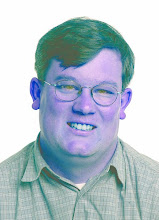Derby's John Pagliaro takes his place as one of Yale's all-time great runners
Trying to bring down Derby’s John Pagliaro might have been a little like attempting to tackle a wind mill. His unforgettable running style resembled that of a drum major gone amok, churning knees seemingly scraping his chin strap.
It was a nightmare for high school linebackers, awoken, perhaps, in a cold sweat, by visions of Pagliaro charging full speed and knee-first. College defenders were equally strained. Just 5-foot-10 and 190 pounds, Pagliaro’s high leg action made him nearly impossible to tackle below the waist.
“If you tried to arm tackle him, you got a face full of cleats,” Yale coach Carm Cozza wrote in his autobiography. “And with his wild hair, thick black mustache, grease paint under his eyes, he was a fearsome sight to opponents.”
Cozza noted that Pagliaro’s decision to stay close to home and play at Yale rekindled local interest in the team, especially in the Naugatuck River Valley. For “Pags” wasn’t just a member of the team or a run-of-the-mill starter. He was a superstar.
Read Chip Malafronte's complete story
Labels: 1876, 1973, 1975, Derby, Derby football, Yale, Yale football
 RSS
RSS

